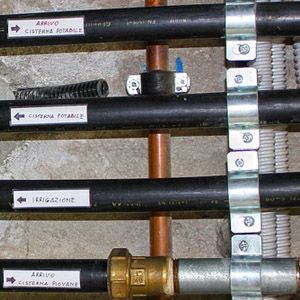
Plumbing refers to all the techniques used to spread liquid fluids or gases in a specific installation: flushing, underfloor heating, taps, cumulus, gas cooker, waste water drainage, butane supply, various pipes, sanitary facilities... These fluids are circulated through a piping system. Pipes, valves, tubes, valves, pumps and valves are used to spread them from a starting point to one or more arrival points.
The piping can be made of various materials such as stainless steel, copper, brass, PER or glass. To ensure the tightness of these different pipes, it is essential to install fittings of which the clamps are part.
What are the characteristics of the plumbing clamp ?
The plumbing clamp must be corrosion resistant and compatible with the materials used in the piping. It must also adapt to the diameter of the tube to be fixed and tightened.
It can be made of plastic or stainless steel. The most important thing is that it seals, holds the fitting in place and resists pressure to prevent water or gas leaks.

How to fix a plumbing collar ?
The most common plumbing clamp is made of stainless steel and consists of several parts: the cradle, clamp and screw tabs. To attach it, you will need a pencil to mark the mark on the wall and a screwdriver.
• Before starting the installation, the collar must be separated in half by unscrewing the two screw tabs on each side.
• Once the chose clamp dissociated, it is necessary to use the half that is equipped with the cradle. The cradle represents the center of one of the halves of the necklace. This part is first fixed against the wall with a pigtail (removable threaded rod) completed with a metal ring to ensure its stability.
• The pipe is then passed through the first half of the collar and tightened by the second half. The tightening is ensured by the two screw tabs located on each side.
Attention, the wall fixing system must be compatible with the materials that make up the wall: concrete, wood, metal, plaster...
What are the different types of plumbing clamps?
If the collar is to be fixed to a plasterboard, an expanding metal dowel can be used instead of the pigtail. If it is placed on a metal beam, it must be replaced by a simple threaded rod to ensure a solid assembly.
In addition to the traditional plumbing clamp, there are isophonic clamps, fortified inside with a toothed band of insulating material, which reduce pipe noise. They are attached in the same way as the simplest collars.
Conical roses are used when the installation requires a distance between the pipe and the wall. They are placed between the wall bracket and the collar, and more precisely at the level of the cradle. In addition to making the installation more aesthetic, the spacer roses prevent thermal damage and water leakage.
There are also other types of clamps specially designed for fixing PVC pipes. They are made of plastic and are not completely closed. The hoses to be fixed are inserted into the two arms of the clamp by simply pressing them in.
Even more basic metal clamps are used for pipe laying in hard-to-reach areas. They consist of a single side bracket and a small fixing hole. These clamps press the tubes against the wall and are fixed with a screw or a dowel.
